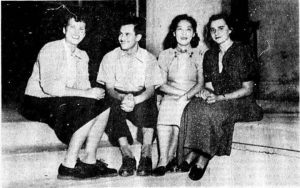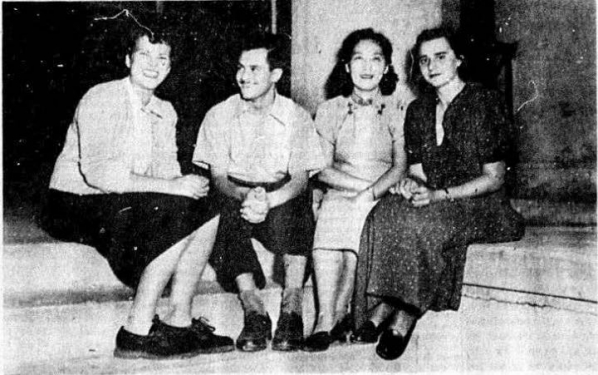A guest post by Nathan Rodney, a graduate student assistant interning at the Special Collections Research Center. He is a second year graduate student with a concentration in public history.
With this year being the 125th anniversary of Appalachian State University, the Special Collections Research Center wanted to dig into our vast archives and provide some highlights on the university’s rich history. One of these highlights, which I was tasked with researching, was the presence of international students at the college at a time when Appalachian State was still a small teachers college and most of the students were locals in the region.
International students being enrolled during the years of the Appalachian State Teachers College (1929-1967) is interesting because it shows that the college had a global connection even in its early years, when the college was small and mostly known to those living in the region and state. Unfortunately, due to the sparse amount of information we have on the early history and records of the university before the 1960s, the most useful sources I used are The Appalachian student newspaper and The Rhododendron.
André Nadeau

The first student I want to highlight is André Nadeau, who attended Appalachian from 1936 to 1940 and was an immigrant from Canada. According to the yearbook, Nadeau was from Claremont, New Hampshire, which is where he lived after his family immigrated. Thanks to a simple search on Ancestry, I was able to learn that he was born in Canada and could speak French. The Rhododendron also indicates that he was very well-known and active on campus, as he was the president of the French club, Le Cercle Français, and the Appalachian Forum and was highly involved in athletics. He was also given the superlative “most influential man,” named “Mr. Appalachian,” and was in the Who’s Who for the college. Nadeau certainly made a name for himself during his time here.
After he graduated, The Appalachian notes that he became a basketball coach at Highland Heights in New Haven, Connecticut and had a very strong season in 1941, just before the United States entered World War II. Nadeau ended up serving in the military during the war but came back to Appalachian in 1945 for that year’s homecoming, where he was recognized as one of the servicemen who attended. Nadeau clearly showed great passion for Appalachian and the country he now called home.
Mathew Hanna

The next student, Mathew Hanna, attended the earliest among these students, having attended the college from 1931 to 1934. He stands out because he apparently was from Iraq, according to the 1934 yearbook. In the 1933 yearbook, however, he is listed as being from Whitehead, North Carolina. However, I was surprised to find three photos that he took in Iraq in 1930 within the small Everette C. Toms collection, which prove that he was in Iraq before coming to Appalachian. In the 1933 yearbook, he was given the nickname of “sheik,” which is defined as an Arab leader, so he was known on campus to have been from the Middle East. Hanna made a long journey to come to Appalachian and was recognized for it.

Photo of "Assyrians" by Mathew Hanna, December 1930

Photo of "the whooppee [hijab] of the mohammedians [sic] during their Holliday [sic]."

The next five students all attended Appalachian at the same time in 1950, according to The Appalachian, in order to learn about life in America and return to their countries with knowledge of "the American way." This sentiment was a response to the rise of communism at the time.
Ming Sung
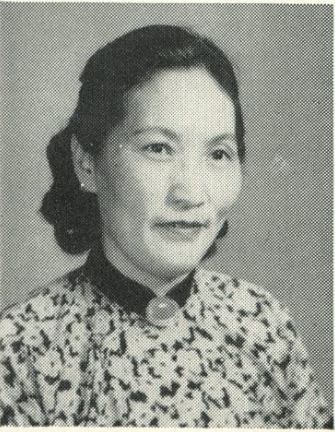
Ming Sung attended the college from 1949 to 1952 and was from Shanghai, China. According to The Appalachian, Sung studied at a Methodist mission in China, called the Laura Haygood Normal School, and came to America on her own devices, though she did receive aid from the Methodist Church of Boone when she was in Boone. Sung studied grammar grade education, and in the 1951-52 academic year, she was a graduate student.
Francisco Fernandez
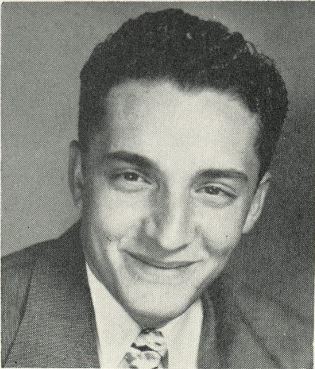
Francisco Fernandez attended Appalachian from 1949 to 1951 and was from Puerto Rico, but there was not a lot of information I could find on him. He studied mathematics and science and was practice teaching during his final year. When asked if he liked living in America, Fernandez said he did.
Jutta Meyfarth and Anneliese Schroeder
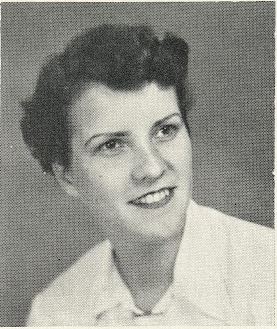
Jutta Meyfarth

Anneliese Schroeder
Two students from Germany attended the college in the 1950-51 year: Jutta Meyfarth and Anneliese Schroeder. Meyfarth studied at the Pedagogical Institute in Kassel, Germany, where there were no majors and they only were taught to teach grammar grades and high school. When interviewed, she talked about the similarities between the Americans and Germans, even though Germans were not very fond of Americans at the time. Schroeder, who was from Munich and studied at the Teachers University there, did not have much to say but shared the same sentiment as Meyfarth. After returning to Germany, Schroeder, in a Christmas letter to The Appalachian, wrote that she was teaching seventh grade and English in Munich.
Hector Sosa

Also during the 1950-51 year, Apolinario Hector Sosa, or Hector to everyone on campus, attended Appalachian. He was from La Plata, Argentina, and came to the college through a scholarship by the 28th District of Rotary International, which gave scholarships to South American students for study at a North Carolina college. In an interview featured in The Appalachian, Sosa wanted to come to the United States to learn about how American libraries operated, so he could potentially apply those methods in school libraries in Argentina. Sosa said that he enjoyed his time at Appalachian and in America, and Argentina and America were similar in some aspects. He especially looked forward to improving his English during his time at Appalachian.
Meyfarth, Schroeder, Sosa, and Sung all took part in the International Relations Club, specifically when the IRC and the Forum Club collaborated on a homecoming project depicting the World’s Fair. They all served as host and hostesses and helped explain the contents of the display, and Sosa even wrote some poems that were featured in magazines published in Argentina. Their project won first place in the homecoming event.
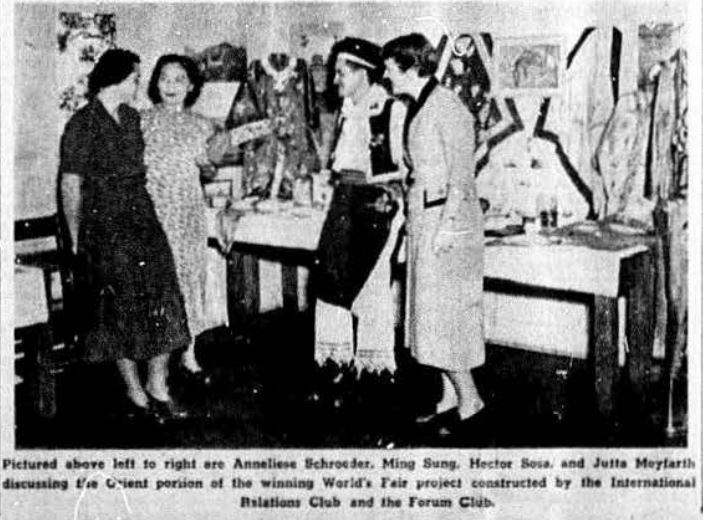
The international students present at the teachers college indicate the global connection Boone had even when the area was relatively isolated. Looking through the yearbooks during these early years, I saw that pretty much everyone who attended Appalachian was from North Carolina, specifically western North Carolina. These foreign students stand out because they show that the small teachers college in rural Boone could attract people from all over the world. This global connection was only a taste of the tremendous growth Appalachian State has had in the last century, and it will only continue to grow and attract people from all over.
